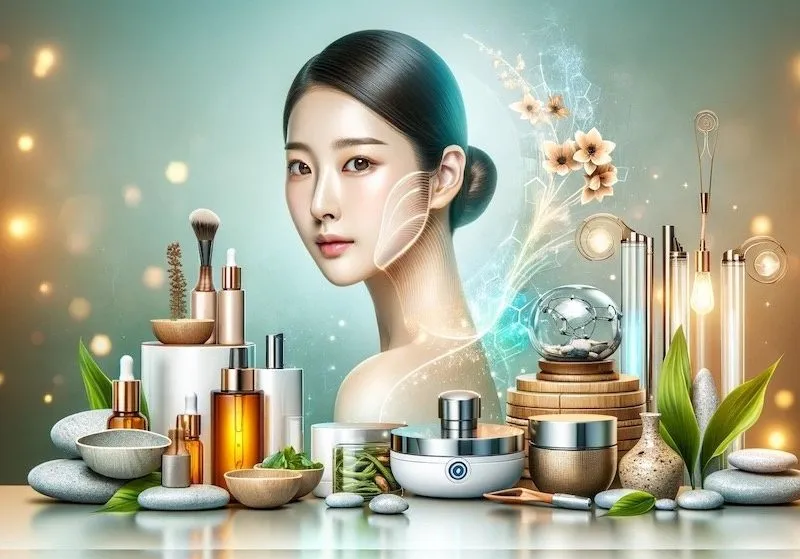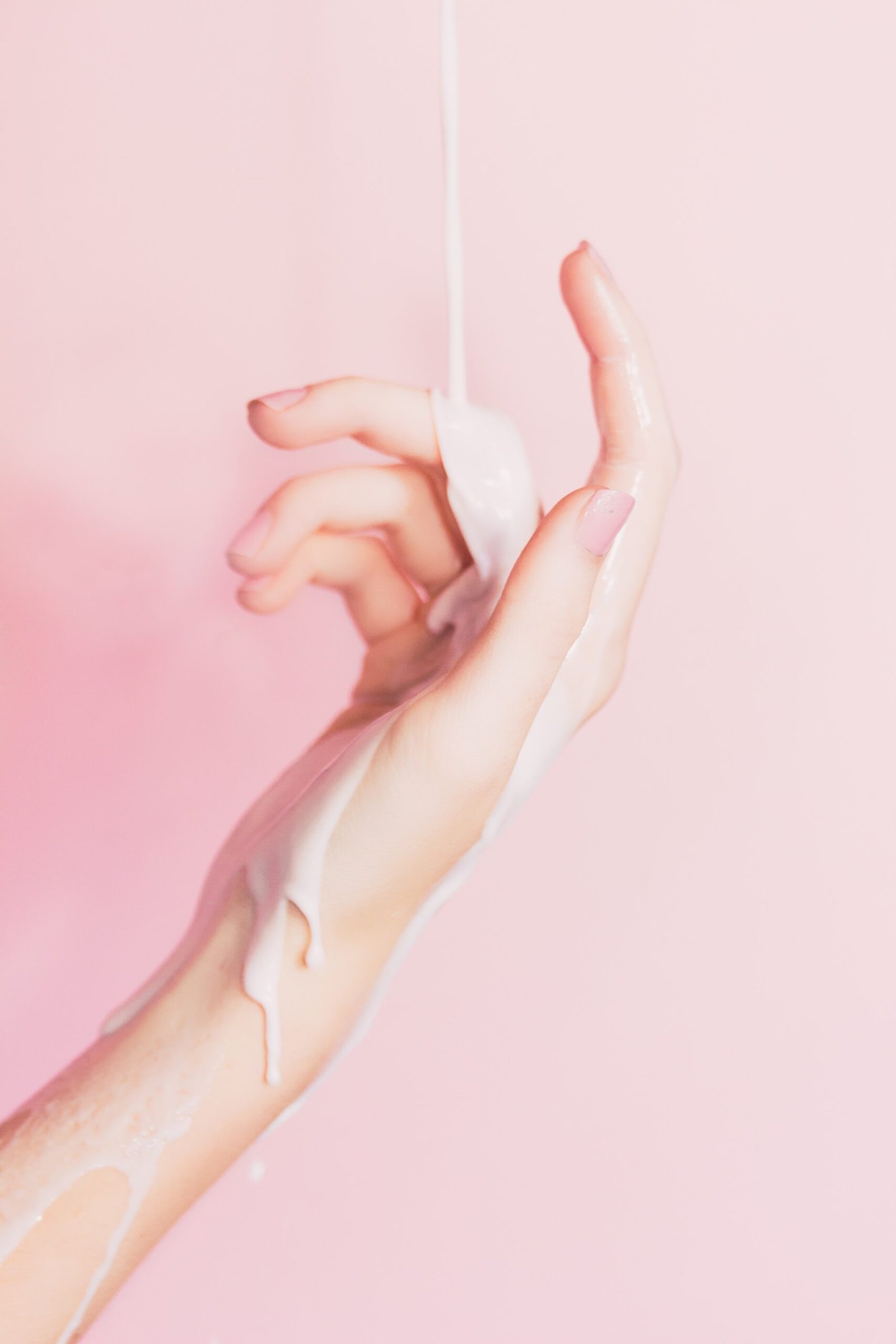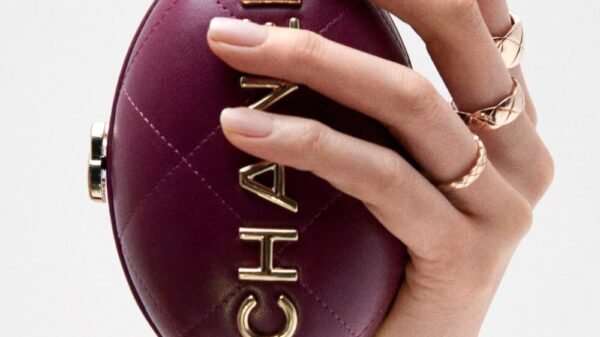Introduction: The Rise of Asian Skincare
In recent years, the global beauty industry has seen an unprecedented surge in the popularity of Asian skincare products. This phenomenon has redefined beauty routines worldwide, bringing innovative formulations and unique beauty philosophies to the forefront. Historically, Japanese skincare held a prominent position in the beauty market, renowned for its meticulous approach and high-quality ingredients. With a legacy rooted in centuries-old traditions and a commitment to harmonious balance, Japanese skincare products garnered a loyal following and established a reputation for excellence.
However, the landscape of Asian skincare began to shift dramatically with the emergence of Korean skincare. In a relatively short period, Korean beauty (often referred to as K-beauty) captured the hearts of consumers globally. Distinguished by its multi-step routines, playful packaging, and the promise of radiant, glass-like skin, Korean skincare quickly gained a cult-like status. The rapid rise of K-beauty can be attributed to its innovative and accessible approach, which resonated with a diverse demographic of beauty enthusiasts.
The competition between Japanese and Korean skincare has become a focal point of discussion within the beauty community. As K-beauty continues to dominate the market, questions arise regarding how it overshadowed the once-dominant Japanese skincare. This blog post delves into the historical significance of Japanese skincare, examines the meteoric rise of Korean skincare, and explores the factors contributing to the shifting dynamics in the battle of beauty between these two Asian powerhouses.
Japanese skincare has a rich history that dates back centuries, rooted in traditional practices and natural ingredients. The origins of Japanese skincare can be traced to the Heian period (794-1185), where noblewomen used rice bran to exfoliate and brighten their skin. This foundational element, known as ‘nuka’, remains a staple in Japanese beauty routines. Another cornerstone of traditional Japanese skincare is green tea, celebrated for its antioxidant properties that protect and rejuvenate the skin. Additionally, sake, a byproduct of rice fermentation, has long been utilized for its moisturizing and anti-aging benefits.
As time progressed, these age-old practices evolved, integrating modern science while retaining their traditional essence. By the 20th century, Japan saw the emergence of several pioneering skincare brands that set new benchmarks in the industry. Shiseido, established in 1872, is one of the oldest and most esteemed skincare companies in Japan. It revolutionized the beauty industry by blending pharmaceutical science with skincare, offering products that promise both luxury and efficacy.
Another iconic brand, SK-II, introduced its signature product, the Facial Treatment Essence, which features Pitera, a unique ingredient derived from sake fermentation. This essence became a game-changer, epitomizing the blend of tradition and innovation. DHC, a brand that started as an educational translation company, ventured into skincare by harnessing the power of olive oil, a Mediterranean ingredient that complements Japanese beauty philosophies.
These brands have been instrumental in establishing Japan’s reputation for high-quality, effective skincare. Their products are not only luxurious but also deeply rooted in the time-honored traditions of Japanese beauty. The meticulous attention to detail, purity of ingredients, and innovative formulations have long set Japanese skincare apart. However, despite this rich heritage and the reputable standards set by these key players, Japanese skincare faced a formidable challenge as Korean skincare began to rise in prominence, offering a new paradigm in the beauty industry.
In recent years, Korean skincare has surged to the forefront of the global beauty industry, captivating consumers with its unique approach and innovative formulations. Central to its allure is the 10-step skincare routine, a comprehensive regimen designed to cleanse, treat, and hydrate the skin meticulously. This routine, which includes steps like double cleansing, exfoliating, toning, and applying essences, has garnered widespread appeal for its promise of achieving radiant, glass-like skin.
The success of Korean skincare can be attributed to its pioneering use of unconventional ingredients, which have intrigued and impressed beauty enthusiasts worldwide. Among these, snail mucin stands out for its regenerative properties, promoting skin healing and anti-aging. Bee venom, known for its anti-inflammatory and antibacterial benefits, has also gained popularity, offering a natural alternative to harsh chemical treatments. Additionally, the incorporation of fermented ingredients has revolutionized skincare by enhancing the potency and absorption of active components, leading to more effective results.
Korean skincare brands have been instrumental in driving this global phenomenon. Innisfree, renowned for its eco-friendly ethos and use of natural ingredients sourced from Jeju Island, has become a favorite among consumers seeking sustainable beauty solutions. Etude House, with its playful and innovative product designs, appeals to a younger demographic, while Laneige, famed for its water-based formulations and hydration-focused products, addresses the needs of those with dry or dehydrated skin.
The combination of these unique elements—an elaborate skincare regimen, groundbreaking ingredients, and influential brands—has positioned Korean skincare as a dominant force in the beauty industry. This dynamic sector continues to evolve, consistently setting new trends and standards, further solidifying its reputation and appeal among global consumers.
Innovation and Technology
The landscape of skincare innovation and technology has seen significant contributions from both Japanese and Korean brands. However, Korean skincare has notably excelled in its aggressive adoption of new technologies and trends, creating a dynamic and ever-evolving market. This relentless pursuit of innovation has ultimately positioned Korean skincare as a formidable force, often outshining its Japanese counterpart.
Japanese skincare has long been revered for its meticulous attention to detail and incorporation of traditional ingredients, such as rice bran, green tea, and sake. These time-honored elements are often combined with advanced scientific research, resulting in high-quality products that emphasize hydration, anti-aging, and skin barrier protection. For instance, SK-II’s Facial Treatment Essence, enriched with Pitera, is a prime example of Japan’s innovative approach to skincare, blending natural ingredients with cutting-edge technology.
In contrast, Korean skincare brands have rapidly gained global recognition for their willingness to experiment and embrace novel technologies. The hallmark of Korean skincare lies in its flexibility and responsiveness to emerging trends. The introduction of products like BB creams, sheet masks, and snail mucin serums has revolutionized the industry. Brands such as COSRX and Laneige have become synonymous with innovation, offering solutions that cater to diverse skin concerns and preferences.
One of the most striking differences is the pace at which Korean skincare brands introduce new products. The concept of the “10-step skincare routine” exemplifies the extensive range of products and steps that Korean consumers are willing to incorporate into their daily regimen. This approach has spurred continuous product development and innovation, with companies frequently launching new formulations to stay ahead of the curve.
Moreover, Korean brands have been particularly adept at leveraging digital technologies to engage with consumers. From virtual skin consultations to personalized product recommendations based on AI algorithms, the integration of technology into the consumer experience has been pivotal in maintaining their competitive edge.
In summary, while Japanese skincare continues to uphold a legacy of quality and tradition, it is the Korean skincare industry’s relentless drive for innovation and quick adaptation to new trends that has ultimately given it an edge in the global beauty market.
Marketing Strategies and Cultural Influence
Japanese and Korean skincare brands have adopted distinctly different marketing strategies, each shaped by their unique cultural contexts. Korean skincare brands have leveraged the power of social media and influencer marketing to captivate a younger, global audience. Platforms like Instagram, YouTube, and TikTok have become virtual runways for K-beauty products, where influencers and beauty gurus regularly showcase and review the latest trends. This dynamic engagement creates a buzz that resonates with a tech-savvy, trend-conscious demographic, propelling Korean skincare into the global limelight.
In contrast, Japanese skincare brands have traditionally favored more conservative and understated marketing approaches. Their focus has often been on quality and heritage, with an emphasis on long-term skincare benefits rather than immediate, visible results. While this strategy appeals to a segment of consumers who value reliability and efficacy, it lacks the viral allure that K-beauty has successfully cultivated. Japanese brands have been slower to adopt the influencer marketing model, relying more on traditional advertising channels and word-of-mouth reputation.
The cultural influence of K-beauty cannot be overstated. The Korean Wave, or Hallyu, has swept across the globe, bringing with it a fascination for Korean pop culture, including music, television dramas, and fashion. This cultural phenomenon has significantly bolstered the appeal of Korean skincare products. The integration of K-pop idols and actors into marketing campaigns further amplifies their reach, creating a seamless blend of entertainment and consumerism that is highly effective in today’s digital age.
Meanwhile, Japanese skincare brands often emphasize a more serene and minimalist aesthetic, reflecting Japan’s cultural values of simplicity and subtlety. While this resonates with consumers seeking a more refined and timeless approach to beauty, it may not generate the same level of excitement and engagement as the vibrant and ever-evolving K-beauty scene. Thus, the divergence in marketing strategies and cultural influences has played a pivotal role in how Japanese and Korean skincare brands are perceived and embraced by a global audience.
Consumer Preferences and Accessibility
Consumer preferences play a critical role in the dominance of Korean skincare over Japanese skincare. A significant factor influencing these preferences is affordability. Korean skincare products are often perceived as more budget-friendly, providing a diverse range of options that cater to various price points. This affordability does not compromise quality, as Korean brands emphasize innovation and effective ingredients. In contrast, Japanese skincare products tend to be positioned at a higher price bracket, making them less accessible to a broader audience.
Accessibility further amplifies the appeal of Korean skincare. The global presence of Korean beauty products in both online markets and physical stores has made them easily obtainable. Major e-commerce platforms like Amazon and specialized beauty websites offer an extensive array of Korean skincare products, ensuring that consumers worldwide can access them with ease. Physical stores, including well-known beauty retailers and dedicated Korean beauty shops, also stock these products, enhancing their visibility and availability.
The variety offered by Korean skincare brands is another compelling draw for consumers. Korean beauty routines often involve multiple steps, each targeting different aspects of skin health. This approach has led to the development of a wide range of products, from cleansers and toners to serums and sheet masks. This extensive variety allows consumers to customize their skincare routines according to their specific needs and preferences. Japanese skincare, while renowned for its effectiveness, often emphasizes a simpler, more minimalist approach, which may not appeal to those seeking a more comprehensive regimen.
Moreover, the marketing strategies employed by Korean skincare brands resonate well with the younger demographic, leveraging social media influencers and engaging in visually appealing packaging. This has fostered a strong cultural and emotional connection with consumers, further solidifying their preference for Korean products. The combination of affordability, accessibility, and variety has positioned Korean skincare as a more attractive option compared to its Japanese counterpart, influencing consumer preferences on a global scale.
Impact of Globalization and Pop Culture
Globalization has played a significant role in the skyrocketing popularity of Korean skincare on the global stage. The cultural phenomenon known as the “Korean Wave” or “Hallyu” has seen Korean pop culture, particularly K-pop and K-dramas, transcend borders and captivate international audiences. Prominent K-pop idols and actors, who are often seen endorsing skincare products, have become influential beauty icons. Their flawless, radiant skin is frequently attributed to the use of Korean skincare products, creating a strong association between these celebrities and the beauty standards they represent.
This widespread exposure has effectively turned Korean skincare into an aspirational lifestyle choice. Fans of K-pop and K-dramas are often eager to emulate the beauty routines of their favorite stars, leading to a surge in demand for Korean beauty products. The aesthetically pleasing packaging, innovative formulations, and the promise of achieving “glass skin” have further fueled this demand. Korean skincare brands have adeptly capitalized on this trend by leveraging social media platforms and influencer marketing to reach a broader audience.
In contrast, Japanese skincare has maintained a more traditional and reserved image. While it is renowned for its quality and efficacy, Japanese skincare lacks the same level of cultural promotion and celebrity endorsement that has propelled Korean products to fame. Japanese beauty practices, deeply rooted in centuries-old rituals, emphasize simplicity and subtlety. However, this understated approach has struggled to compete with the vibrant and dynamic marketing strategies employed by Korean brands.
As a result, the global beauty market has seen a noticeable shift in preference towards Korean skincare. The cultural influence of Korean pop culture has not only altered beauty standards but has also overshadowed the presence of Japanese skincare, leading to its diminished visibility and market share on the international stage.
Conclusion: The Future of Asian Skincare
In examining the trajectory of Japanese and Korean skincare, it is clear that the global beauty market has witnessed a dynamic shift. Japanese skincare, once revered for its minimalistic and science-driven approach, has seen its dominance wane in the face of Korean skincare’s innovative and consumer-centric strategies. Key factors such as K-beauty’s rapid product development, effective marketing, and trendsetting capabilities have contributed to its ascendancy.
Despite the current dominance of Korean skincare, the competition between these two giants remains fierce. Japanese brands are not standing idly by; they are actively investing in research and technology to reclaim their share of the market. The emphasis on natural ingredients and sustainable practices is becoming a focal point for both Japanese and Korean skincare companies, aligning with the increasing consumer demand for eco-friendly and ethical products.
Looking forward, the future of Asian skincare is poised for further evolution. We can expect to see a blend of traditional wisdom and modern science, with both Japanese and Korean brands pushing the boundaries of innovation. Personalization and inclusivity are emerging trends that will likely shape the industry, with products tailored to individual skin types and concerns becoming more prevalent. Additionally, the integration of technology such as AI and machine learning in skincare solutions will offer more bespoke experiences for consumers.
Ultimately, the ongoing competition between Japanese and Korean skincare brands will drive continuous improvement and diversification in the beauty industry. As both countries adapt to changing consumer preferences and global market trends, their influence on the skincare landscape will remain significant. The future of Asian skincare lies in its ability to innovate while honoring its rich cultural heritage, ensuring that both Japanese and Korean brands continue to captivate and meet the needs of beauty enthusiasts worldwide.










